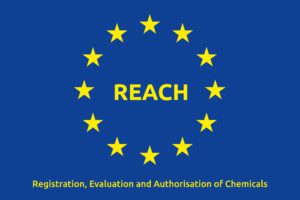As the demand for protection against per- and polyfluoroalkyl substances (PFAS) grows across the globe, the risk for manufacturers and suppliers is also growing. PFAS restrictions are increasing worldwide, and as consumers become more concerned with the PFAS found in their products, companies are facing increased lawsuits and liabilities.
However, PFAS can be found almost everywhere. They are widespread in products and in the environment. While some have been added intentionally to products, others may enter the manufacturing process or the final product unintentionally.
This means that companies are facing increased risks even if they are not intentionally using PFAS in their products.
As these risks increase, it is more important than ever for your company to have a strong PFAS gameplan to reduce PFAS found in your products and to be ready to face potential issues.
What are PFAS?
PFAS are man-made substances that have been widely used in manufacturing and consumer products. They are all made with a carbon to fluorine bond, which is considered to be one of the strongest chemical bonds. This gives materials high resistance to environmental degradation, making them extremely popular for use in items like non-stick pans or stain-resistant fabric.
However, because PFAS are so difficult to break down, this also means that they persist and accumulate in the environment. This can be harmful to both human health and the environment.
PFAS Liabilities and Risks
You are likely already aware of the growing regulatory requirements you could face for PFAS found in your products. Across the world, governments and jurisdictions are considering more stringent regulations for PFAS and it’s important to be prepared for them.
However, in the current PFAS landscape you may be dealing with more than just regulatory penalties if your products contain PFAS. You may also face a higher risk of lawsuits. The legal world has recently seen an increase in class action lawsuits filed against companies whose products contains PFAS, especially if those companies have claimed to have “natural” products.
Having a strong PFAS management program in place means not just meeting your compliance regulations, but also reducing the risk of your legal liabilities.
How Can You Protect Your Company?
Identify PFAS In Your Products and Supply Chain
The first step in creating a strong PFAS management program is to identify the PFAS in your products and supply chain. However, this is easier said than done. Because PFAS have become so pervasive in the environment, it can be easy for them to sneak into products or manufacturing processes unnoticed.
First, take a look at your products. Develop a full materials declaration for them so you have all the information you need about the chemicals found in your products.
Then examine your manufacturing processes and equipment. PFAS can be present in everything from chemicals used in manufacturing to the byproducts left at the end of your manufacturing processes.
Wherever possible in your products and manufacturing, work to reduce the use of PFAS. This will mean identifying alternative substances and possibly reformulating your products. While this may be a costly task, protecting yourself against PFAS liabilities and preparing your products to meet new PFAS regulatory requirements is essential, and failure to do so may cost you more resources in the long run.
Communication with your supply chain is also critical when it comes to identifying PFAS. Make sure your suppliers know what you expect when it comes to PFAS reporting and that they are working to identify and reduce PFAS in their own products and manufacturing.
Provide PFAS Transparency
In some cases, it might not be possible to completely remove PFAS from your products or manufacturing. If this is the case, you should be as transparent as possible about the PFAS your products contain or where PFAS might be present in your manufacturing processes.
Misleading advertising or packaging information will only serve to increase your legal liabilities. This has been the case for several products that have recently faced legal challenges. These products have claimed to be “natural” but have had measurable levels of PFAS. If your products have PFAS, disclose that to your consumers.
You will also want to make sure you are in compliance when it comes to meeting PFAS regulations. If you have PFAS in your products that are impossible to remove, make sure you obtain the appropriate exemptions for the regulatory requirements you are subject to.
Assess Insurance Coverage
Because PFAS are so pervasive, insurance companies are becoming increasingly wary of covering companies against potential PFAS lawsuits. This means that you may have trouble securing insurance or the insurance policy you have may not cover you for PFAS-related legal action.
It is essential that you understand what your insurance will and will not cover. Then, make sure you are prepared to deal with costs that may be associated with PFAS-related claims your insurance may not cover.
Get PFAS Support From Tetra Tech
Finding and replacing PFAS in your products and manufacturing processes is becoming more important by the day. Companies are facing increased legal risks as they simultaneously face new regulatory requirements. However, the pervasiveness of PFAS in the wider environment can make identifying them in your products tricky.
If you are feeling overwhelmed by the process of identifying and reducing PFAS in your products and supply chain, contact Tetra Tech’s compliance experts today. We can help you uncover PFAS in your products, survey your supply chain for PFAS, identify alternative substances, and develop a sustainable plan to meet PFAS regulations and reduce your risk of legal liabilities.






